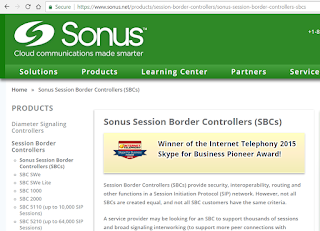Vector Capital, a leading global private equity firm, agreed to acquire Sandvine (TSX: SVC) for CAD $3.80 in cash per share, representing an equity value of approximately CAD $483 million.
"The Sandvine Team has built the clear leader in network policy control and I am extremely proud of what we have accomplished to date," said Dave Caputo, Sandvine's President and Chief Executive Officer. "There are a number of long-term growth opportunities that Vector, as a specialist technology investor, is enthusiastic about and can help us pursue more aggressively. We see this as an excellent opportunity to better serve our 300-plus customers, to enhance our strategic position over the longer term, and to do it The Sandvine Way."
"We are excited to partner with Dave and this deeply talented management team to take Sandvine to the next level," said Rob Amen, a Managing Director at Vector Capital. "We are confident that, together with the founding team, Vector can enhance Sandvine's proud track record of growth, innovation and independent operations. Vector was specifically formed to collaborate with market leading technology companies to accelerate their growth and redefine their markets in new and disruptive ways. We believe that Sandvine's emerging product opportunities and transition to fully virtualized solutions represent an opportunity for such a disruption. Our partnership with this deeply talented Team couldn't be stronger."
http://www.sandvine.com
"The Sandvine Team has built the clear leader in network policy control and I am extremely proud of what we have accomplished to date," said Dave Caputo, Sandvine's President and Chief Executive Officer. "There are a number of long-term growth opportunities that Vector, as a specialist technology investor, is enthusiastic about and can help us pursue more aggressively. We see this as an excellent opportunity to better serve our 300-plus customers, to enhance our strategic position over the longer term, and to do it The Sandvine Way."
"We are excited to partner with Dave and this deeply talented management team to take Sandvine to the next level," said Rob Amen, a Managing Director at Vector Capital. "We are confident that, together with the founding team, Vector can enhance Sandvine's proud track record of growth, innovation and independent operations. Vector was specifically formed to collaborate with market leading technology companies to accelerate their growth and redefine their markets in new and disruptive ways. We believe that Sandvine's emerging product opportunities and transition to fully virtualized solutions represent an opportunity for such a disruption. Our partnership with this deeply talented Team couldn't be stronger."
http://www.sandvine.com















